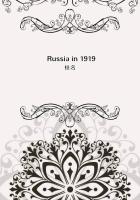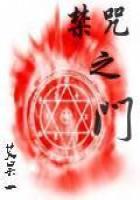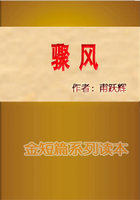Siemens a gold medal for his regenerative condenser. Various papers read before the Institution of Mechanical Engineers, the Institution of Civil Engineers, or appearing in DINGLER'S JOURNAL and the JOURNAL OF THEFRANKLIN INSTITUTE about this time, illustrate the workings of his mind upon the subject. That read in 1853, before the Institution of Civil Engineers, 'On the Conversion of Heat into Mechanical Effect,' was the first of a long series of communications to that learned body, and gained for its author the Telford premium and medal. In it he contended that a perfect engine would be one in which all the heat applied to the steam was used up in its expansion behind a working piston, leaving none to be sent into a condenser or the atmosphere, and that the best results in any actual engine would be attained by carrying expansion to the furthest possible limit, or, in practice, by the application of a regenerator. Anxious to realise his theories further, he constructed a twenty horse-power engine on the regenerative plan, and exhibited it at the Paris Universal Exhibition of 1855; but, not realising his expectations, he substituted for it another of seven-horse power, made by M. Farcot, of Paris, which was found to work with considerable economy. The use of superheated steam, however, still proved a drawback, and the Siemens engine has not been extensively used.
On the other hand, the Siemens water-meter, which he introduced in 1851, has been very widely used, not only in this country, but abroad.
It acts equally well under all variations of pressure, and with a constant or an intermittent supply.
Meanwhile his brother Werner had been turning his attention to telegraphy, and the correspondence which never ceased between the brothers kept William acquainted with his doings. In 1844, Werner, then an officer in the Prussian army, was appointed to a berth in the artillery workshops of Berlin, where he began to take an interest in the new art of telegraphy. In 1845 Werner patented his dial and printing telegraph instruments, which came into use all over Germany, and introduced an automatic alarm on the same principle. These inventions led to his being made, in 1846, a member of a commission in Berlin for the introduction of electric telegraphs instead of semaphores. He advocated the use of gutta-percha, then a new material, for the insulation of underground wires, and in 1847 designed a screw-press for coating the wires with the gum rendered plastic by heat. The following year he laid the first great underground telegraph line from Berlin to Frankfort-on-the-Main, and soon afterwards left the army to engage with Mr. Halske in the management of a telegraph factory which they had conjointly established in 1847. In 1852 William took an office in John Street, Adelphi, with a view to practise as a civil engineer. Eleven years later, Mr. Halske and William Siemens founded in London the house of Siemens, Halske & Co., which began with a small factory at Millbank, and developed in course of time into the well-known firm of Messrs.
Siemens Brothers, and was recently transformed into a limited liability company.
In 1859 William Siemens became a naturalised Englishman, and from this time forward took an active part in the progress of English engineering and telegraphy. He devoted a great part of his time to electrical invention and research; and the number of telegraph apparatus of all sorts--telegraph cables, land lines, and their accessories--which have emanated from the Siemens Telegraph Works has been remarkable. The engineers of this firm have been pioneers of the electric telegraph in every quarter of the globe, both by land and sea. The most important aerial line erected by the firm was the Indo-European telegraph line, through Prussia, Russia, and Persia, to India. The North China cable, the Platino-Brazileira, and the Direct United States cable, were laid by the firm, the latter in 1874-5 So also was the French Atlantic cable, and the two Jay Could Atlantic cables. At the time of his death the manufacture and laying of the Bennett-Mackay Atlantic cables was in progress at the company's works, Charlton. Some idea of the extent of this manufactory may be gathered from the fact that it gives employment to some 2,000 men. All branches of electrical work are followed out in its various departments, including the construction of dynamos and electric lamps.
On July 23, 1859, Siemens was married at St. James's, Paddington, to Anne, the youngest daughter of Mr. Joseph Gordon, Writer to the Signet, Edinburgh, and brother to Mr. Lewis Gordon, Professor of Engineering in the University of Glasgow, He used to say that on March 19 of that year he took oath and allegiance to two ladies in one day--to the Queen and his betrothed. The marriage was a thoroughly happy one.
Although much engaged in the advancement of telegraphy, he was also occupied with his favourite idea of regeneration. The regenerative gas furnace, originally invented in 1848 by his brother Friedrich, was perfected and introduced by him during many succeeding years. The difficulties overcome in the development of this invention were enormous, but the final triumph was complete.
The principle of this furnace consists in utilising the heat of the products of combustion to warm up the gaseous fuel and air which enters the furnace. This is done by making these products pass through brickwork chambers which absorb their heat and communicate it to the gas and air currents going to the flame. An extremely high temperature is thus obtained, and the furnace has, in consequence, been largely used in the manufacture of glass and steel.















